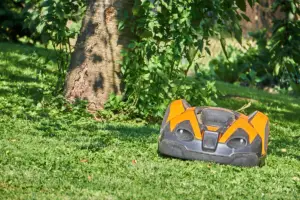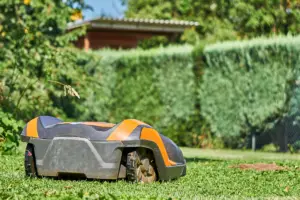When it comes to dealing with rats, many people may immediately think of using traps or poison to get rid of them.
However, these methods can be inhumane and may pose risks to other animals and humans. Fortunately, there are ways to get rid of rats without killing them.
One approach is to use live traps that capture rats without causing harm. These traps work by luring rats with bait and then trapping them inside a cage.
Once trapped, the rats can be released into the wild far away from residential areas. This approach is not only humane but also effective as it reduces the rat population without harming them.
Another way to get rid of rats without killing them is to use natural repellents. Rats are sensitive to smells, so using strong essential oils like peppermint or cayenne pepper can help deter them.
Additionally, certain plants like mint, lavender, and marigold can also repel rats. By using natural repellents, homeowners can avoid using harmful chemicals and keep their homes rat-free.

Table of Contents
Identifying Rat Infestation
Rats are known to be sneaky and can easily hide in the smallest of spaces. Identifying a rat infestation can be difficult, but there are a few telltale signs to look out for.
Droppings
One of the most common signs of a rat infestation is droppings. Rat droppings are small, dark, and pellet-shaped.
They are usually found in areas where rats are known to frequent, such as along walls, in corners, or behind furniture.
Gnaw marks
Rats have a constant need to gnaw on things to keep their teeth sharp and healthy. As a result, they leave behind gnaw marks on wood, plastic, and even electrical wiring.
Look out for small teeth marks on baseboards, furniture, and other household items.
Grease marks
Rats have oily fur that leaves behind grease marks on surfaces they frequently rub against. These marks are usually found along walls or near rat holes.
Strange noises
Rats are nocturnal creatures and are most active at night. If you hear strange scratching or scurrying noises coming from your walls or ceiling, it could be a sign of a rat infestation.
Nests
Rats build nests in warm, secluded areas such as attics, basements, and crawl spaces. If you find a nest made of shredded paper, fabric, or other materials, it could be a sign of a rat infestation.
Smells
Rats have a distinct, musky odor that can be easily identified if there is a large infestation. The smell is usually strongest in enclosed spaces such as closets, attics, or crawl spaces.
By identifying these signs, you can quickly determine if you have a rat infestation in your home. It is important to take action as soon as possible to prevent the infestation from getting worse.
Preventing Rat Infestation
Preventing a rat infestation is the best way to get rid of rats without killing them. Here are some tips to keep rats away from your home.
Keeping the House Clean
Keeping the house clean is the first step in preventing a rat infestation. Rats are attracted to food and garbage, so make sure to keep the kitchen and other areas of the house clean.
Here are some tips to keep the house clean:
- Keep all food in sealed containers.
- Clean up food spills and crumbs immediately.
- Take out the garbage regularly.
- Keep the kitchen sink and counters clean and free of dishes.
- Store pet food in sealed containers.
Sealing Entry Points
Sealing entry points is another important step in preventing a rat infestation. Rats can enter the house through small cracks and openings, so make sure to seal all entry points.
Here are some tips to seal entry points:
- Inspect the house for cracks and openings.
- Seal all cracks and openings with caulk or steel wool.
- Install door sweeps on all doors.
- Install screens on all windows.
By following these tips, you can prevent a rat infestation and keep your home rat-free.
- IMPENETRABLE RODENT BARRIER: Xcluder Rodent-Proof Fill Fabric fills gaps, holes and openings throughout buildings to create a barrier that mice, rats and other pests are unable or unwilling to gnaw through.
- PERMANENT SOLUTION: Our eco-friendly, stainless steel and poly fiber material wont rust or degrade, creating a permanent seal to rodent entry points. Kit includes 4-inch x 5-foot roll of Xcluder Stainless Steel Wool Fill Fabric, shears and sturdy work gloves.
- PEST BLOCKER: Stop mice, rats and other rodents from entering homes, offices and more by using our innovative steel wool fill fabric that mice and rats cannot chew through.
- RUST RESISTANT: Xcluder fill fabric is made from coarse stainless steel wool interwoven with poly fibers, making a permanent, rust-proof pest barrier.
- MADE IN AMERICA: Tested and proven effective by the USDAs APHIS Lab, Rodent Control Fill Fabric creates a protective barrier against rodents and insects without reliance on harmful chemicals or harsh pesticid
Prices pulled from the Amazon Product Advertising API on:
Product prices and availability are accurate as of the date/time indicated and are subject to change. Any price and availability information displayed on [relevant Amazon Site(s), as applicable] at the time of purchase will apply to the purchase of this product.
Repelling Rats
Rats are a common household pest that can cause a lot of damage and spread disease.
While some people may resort to killing rats to get rid of them, there are also humane and effective ways to repel them without causing harm.
Using Natural Repellents
One way to repel rats without killing them is by using natural repellents. Some effective natural repellents include:
- Peppermint oil: Rats dislike the smell of peppermint oil. Soaking cotton balls in peppermint oil and placing them near rat entry points can help keep them away.
- Ammonia: Rats are also repelled by the smell of ammonia. Soaking rags in ammonia and placing them near rat entry points can be effective.
- Garlic: Rats dislike the smell of garlic. Placing crushed garlic cloves near rat entry points can help keep them away.
- Cayenne pepper: Rats are also repelled by the smell of cayenne pepper. Sprinkling cayenne pepper near rat entry points can be effective.
Using Electronic Repellents
Another way to repel rats without killing them is by using electronic repellents. These devices emit high-frequency sound waves that rats find irritating and can help keep them away.
Some electronic repellents also emit flashing lights that rats find frightening. Some effective electronic repellents include:
- Ultrasonic pest repellers: These devices emit high-frequency sound waves that are inaudible to humans but irritating to rats.
- Strobe lights: Rats are frightened by flashing lights. Installing strobe lights near rat entry points can help keep them away.
It’s important to note that while natural and electronic repellents can be effective, they may not work in all situations.
It’s also important to take steps to prevent rats from entering your home in the first place, such as sealing cracks and gaps and eliminating food sources.
If you have a serious rat infestation, it’s best to consult with a professional pest control company.
Trapping Rats
Trapping rats is an effective way to get rid of them without killing them. There are different types of traps available, including live traps and glue traps.
Using Live Traps
Live traps are humane and safe for rats. They work by luring the rats with bait and then trapping them inside the cage. Here are the steps to use a live trap:
- Choose the right size trap: The trap should be large enough to hold the rat but not too big that it can escape.
- Place the bait: Peanut butter, cheese, or nuts are good options for bait. Place the bait at the back of the trap.
- Set the trap: Follow the instructions provided with the trap to set it up.
- Place the trap: Place the trap in an area where rats are frequently seen.
- Check the trap: Check the trap regularly, at least once a day, and release the rat in a safe location.
Using Glue Traps
Glue traps are another option for trapping rats. They work by sticking the rat to the trap, making it unable to move. Here are the steps to use a glue trap:
- Choose the right size trap: The trap should be large enough to hold the rat.
- Place the trap: Place the trap in an area where rats are frequently seen.
- Add bait: Peanut butter, cheese, or nuts are good options for bait. Place the bait in the center of the trap.
- Check the trap: Check the trap regularly, at least once a day, and dispose of the rat by pouring vegetable oil on it to release it from the trap.
It’s important to note that glue traps can cause injury to the rat, and it’s not a humane option. Live traps are a better option for those who want to get rid of rats without harming them.
In conclusion, trapping rats can be an effective way to get rid of them without killing them. Live traps are a humane option, while glue traps can cause injury to the rat.
Choose the right trap and bait, place it in the right location, and check it regularly to ensure success.
Conclusion
In conclusion, finding humane methods to eliminate rats without causing harm to them is not only possible but also preferable.
By employing preventive measures such as sealing entry points, maintaining cleanliness, and removing food sources, one can discourage rats from invading their space.
Implementing non-lethal trapping methods like live traps and relocation allows for the removal of rats while preserving their lives.
Remember, when dealing with rat infestations, prioritizing their humane removal ensures a compassionate and effective approach to pest control.
- How to Build a Planter Box for Bamboo: A Step-by-Step Guide

- Can Robotic Lawnmowers Handle Steep Slopes?

- Do You Need a Specific Lawn for a Robotic Lawnmower? Expert Advice

- Are Robotic Lawnmowers Safe for Pets and Children? Safety Features of Robotic Lawnmowers

- Why Use Robotic Lawnmowers? Advantages of Using a Robotic Lawnmower

- Is the GARDENA SILENO City 300 Cordless or Corded? A Clear Answer















